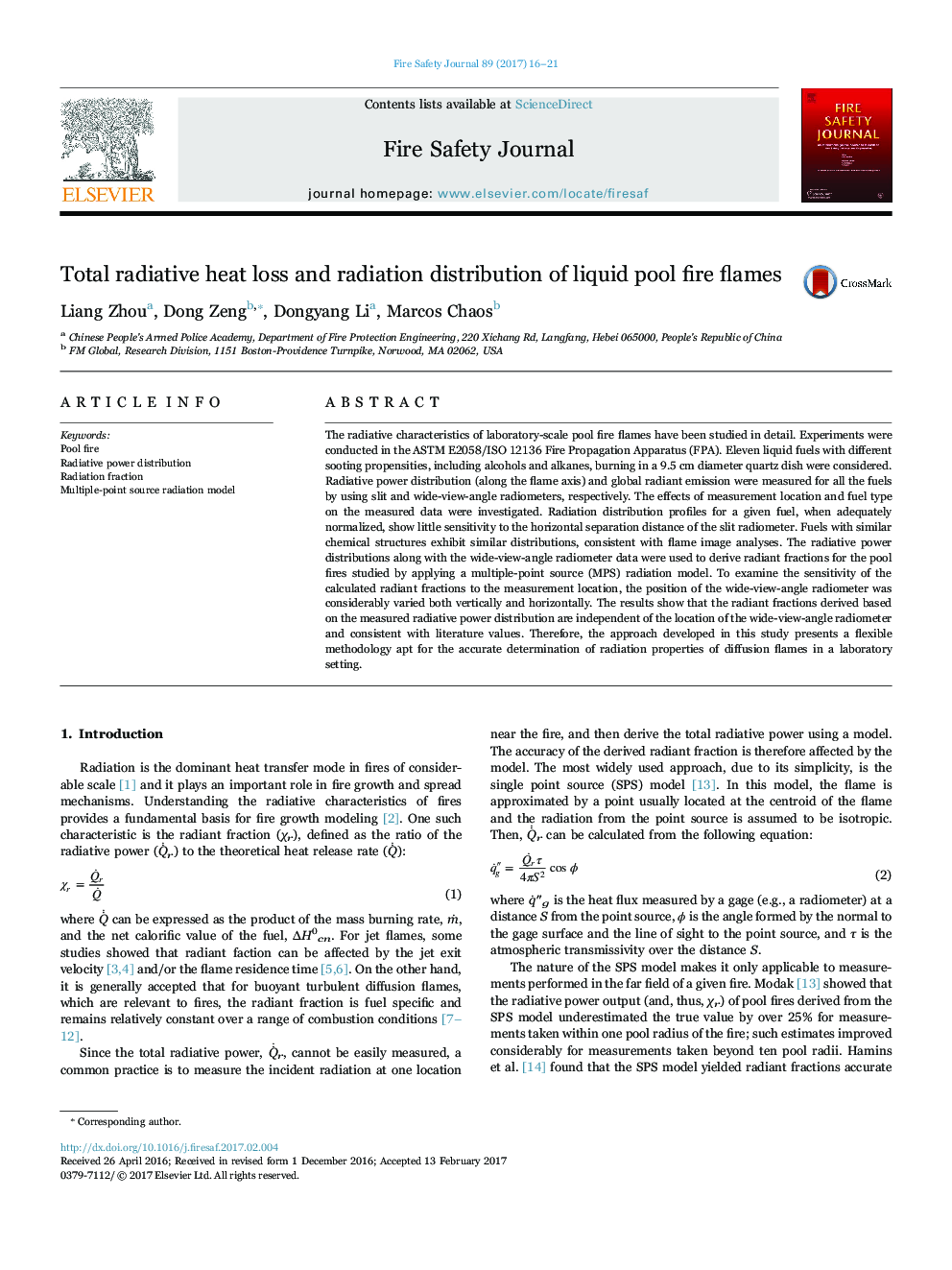| Article ID | Journal | Published Year | Pages | File Type |
|---|---|---|---|---|
| 4920978 | Fire Safety Journal | 2017 | 6 Pages |
Abstract
The radiative characteristics of laboratory-scale pool fire flames have been studied in detail. Experiments were conducted in the ASTM E2058/ISO 12136 Fire Propagation Apparatus (FPA). Eleven liquid fuels with different sooting propensities, including alcohols and alkanes, burning in a 9.5Â cm diameter quartz dish were considered. Radiative power distribution (along the flame axis) and global radiant emission were measured for all the fuels by using slit and wide-view-angle radiometers, respectively. The effects of measurement location and fuel type on the measured data were investigated. Radiation distribution profiles for a given fuel, when adequately normalized, show little sensitivity to the horizontal separation distance of the slit radiometer. Fuels with similar chemical structures exhibit similar distributions, consistent with flame image analyses. The radiative power distributions along with the wide-view-angle radiometer data were used to derive radiant fractions for the pool fires studied by applying a multiple-point source (MPS) radiation model. To examine the sensitivity of the calculated radiant fractions to the measurement location, the position of the wide-view-angle radiometer was considerably varied both vertically and horizontally. The results show that the radiant fractions derived based on the measured radiative power distribution are independent of the location of the wide-view-angle radiometer and consistent with literature values. Therefore, the approach developed in this study presents a flexible methodology apt for the accurate determination of radiation properties of diffusion flames in a laboratory setting.
Keywords
Related Topics
Physical Sciences and Engineering
Engineering
Civil and Structural Engineering
Authors
Liang Zhou, Dong Zeng, Dongyang Li, Marcos Chaos,
